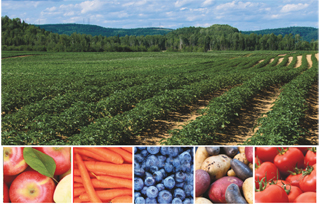Lance McGinn, director of sales with B.C. Tree Fruits Cooperative in Kelowna, says his business experienced very low volume in the 2013-14 season, due in large part to extensive hail damage. The destructive hailstorm struck east of Kelowna in August 2013, pummeling crops and causing up to $6 million in total damage.
Nevertheless, McGinn was optimistic about the future and several new ventures, including an offshoot of the Cooperative’s top commodity, apples, into cider production. “This company will be producing Real Apple Cider from 100 percent local British Columbia apples,” McGinn remarks.
True to its name, B.C. Tree Fruits also handles cherries, pears, peaches, prunes, nectarines, apricots, and a limited volume of plums. “Our growers are replanting new varieties,” McGinn says, which he hopes will be “best suited to market demand and expectations.” The Cooperative is also “planning for expansion in the apple and cherry category, as our new plantings come into production.”
Manitoba
Manitoba, the “Keystone Province,” is located between Saskatchewan to the west and Ontario to the east (with Nunavut to the north). Its long, warm growing season, hearty soil, and abundance of water help the province’s farmers grow more than 110 different types of vegetables. Top vegetable crops include potatoes, carrots, onions, cabbage, cauliflower, sweet corn, broccoli, and an increasing array of Asian vegetables such as baby corn, bok choy, and several varieties of cabbage.
Manitoba’s southern and western regions have proven ideal for growing potatoes, and the province supplies nearly 20 percent of Canada’s yearly crop. Although harvested acreage has fallen over the last few years from 75,500 acres in 2012 to 62,450 acres in 2014, yields have risen from an average of 275 hundredweight per acre in 2012 to a peak of 310 hundredweight in 2013, then dipped slightly to 304.5 hundredweight per acre in 2014. Luckily for some of Manitoba’s spud producers, the province is home to four potato-processing plants, so grower-shippers can save on freight costs.
Although vegetables are dominant, Manitobans also grow fruit, including apples and chokecherries (a cousin to black cherries), as well as a variety of berries such as blueberries, raspberries, strawberries, Saskatoon berries, gooseberries, pinch berries, and Buffaloberries. The province has also followed the lead of Ontario in converting field acreage to greenhouses, for steady production of cucumbers and lettuce without worry of the region’s often tumultuous temperatures.



